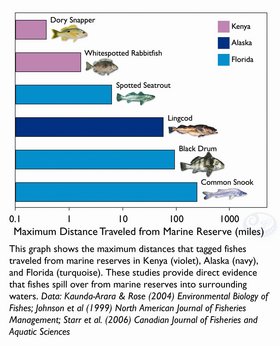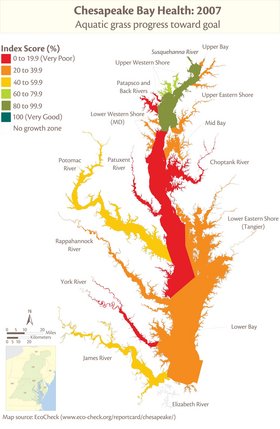Climate Solutions: Chapter 5
Contents
Case Study of Chesapeake Bay Eel grass
Over the past 50 years, humans have changed ecosystems more rapidly and extensively than in any comparable period in human history, largely to meet fast-growing demands for food, fresh water, timber, fiber, and fuel. —Millennium Ecosystem Assessment 2005 The threats to the future of biodiversity include habitat conversion, environmental toxification, climate change, and direct exploitation of wildlife. [15] —Paul Ehrlich and Robert Pringle, 2008 Species are becoming extinct at the fastest rate known in geological history and most of these extinctions have been tied to human activity. [18] —Ecological Society of America, 2008
The loss of critical biodiversity is just as threatening for aquatic environments as land-based life. For example, eelgrass is common throughout the world in coastal estuaries. There it serves as a primary producer of oxygen through photosynthesis. “Aquatic grasses, or submerged aquatic vegetation, are one of the most important habitats in Chesapeake Bay. Bay grasses provide critical habitat to key species such as blue crab and striped bass, and can improve water clarity.” [5]
The Chesapeake Bay is the largest estuary in the United States, where fresh and salt water mix on daily tides in a life-sustaining broth for myriad plants and animals. The bay’s watershed is fed by 150 rivers from six states and the District of Columbia. The bay itself is 300 km (200 miles) long. In the 1970s, the bay contained one of the planet's first identified marine dead zones, an area with too little oxygen to support life. Farm runoff and industrial waste prevented sunlight (Solar radiation) from reaching the bottom of the bay, and the eelgrass beds withered. While the environmental regulations have largely helped clean up the worst pollution sources, the bay has continued to suffer dramatic losses of the nursery beds. In 2005, 78,000 acres of eelgrass beds remained. The very next year, 2006, a 25% decline caused the eelgrass beds to shrink to just under 60,000 acres. The result is a greatly impoverished estuary whose oxygen-starved waters can no longer support the marine life for which it was once so famous. Delicious Maryland crab cakes may be a thing of the past in a very short time.
{Insert Figure 5.10 Aquatic Grass Collapse in Chesapeake Bay}
Online figures
Bibliography
- Blockstein DE (1989) A federal policy is needed to conserve biological diversity. Issues in Science and Technology 5(4):63?– 67. http://www.issues.org/
- Cadotte MW, Cardinale BJ, Oakley TH (2008) Evolutionary history and the effect of biodiversity on plant productivity. Proceedings of the National Academy of Sciences. http://www.pnas.org/content/105/44/17012.abstract
- Cardinale BJ, Wright JP, Cadotte MW, Carroll IT, Hector A, Srivastava DS, Loreau M, Weis JJ (2007) Impacts of plant diversity on biomass production increase through time because of species complementarity. Proceedings of the National Academy of Sciences 104(46):18123. http://www.pnas.org/cgi/content/abstract/104/46/18123
- CBD (2008) Convention on Biological Diversity. Montreal (read December 18, 2008). http://www.cbd.int
- Chesapeake EcoCheck (2007) Chesapeake Bay Health Report Card. Partnership between NOAA, IAN, and UMCES (read October 4, 2008). http://www.eco-check.org/reportcard/chesapeake/2007/indicators/aquatic_grasses/
- Chivian E, Bernstein A (2008) Sustaining Life: How Human Health Depends on Biodiversity. (Oxford University Press, Oxford). http://www.oup.com/us/catalog/general/subject/LifeSciences/Ecology/?view=usa&ci=9780195175097
- Cohen AN, Carlton JT (1998)Accelerating invasion rate in a highly invaded estuary. Science 279:555?– 558. http://www.sciencemag.org/cgi/content/abstract/279/
- Cohn JP (2005) Urban wildlife. BioScience 55(3):201?– 205. http://www.tufts.edu/vet/seanet/pdf/bioscience_cohn_2005.pdf
- Congressional Research Service (CRS) (2008) “The Endangered Species Act and Claims of Property Rights ‘Takings,’” (topic ed) McGinley M, in Encyclopedia of Earth, (ed) Cleveland CJ. (Environmental Information Coalition, National Council for Science and the Environment, Washington, DC). [[1]]
- Conservation International (2007) Biodiversity Hotspots. Glossary (read November 23, 2008). http://www.biodiversityhotspots.org/xp/Hotspots/resources/pages/maps.aspx
- Duffy E (2006) “Marine Ecosystem Services,”(topic ed) Smith W, in Encyclopedia of Earth, (ed) Cleveland CJ. (Environmental Information Coalition, National Council for Science and the Environment, Washington, DC). [[2]]
- Duffy E (2007) “Marine Biodiversity and Food Security,” (topic ed) Cleveland CJ, in Encyclopedia of Earth, (ed) Cleveland CJ. (Environmental Information Coalition, National Council for Science and the Environment, Washington, DC). [[3]]
- Dunn RR, Danoff-Burg JA (2007) Road size and carrion beetle assemblages in a New York forest. Journal of Insect Conservation 11(4):325?– 332. http://www.springerlink.com/index/64645T21H777138L.pdf
- Edlinger E (1998) Effects of land-based pollution on Indonesian coral reefs: biodiversity, growth rates, bioerosion, and applications to the fossil record. Paper AAINQ42843. http://digital commons.mcmaster.ca/dissertations/AAINQ42843
- Ehrlich PR, Pringle RM (2008) Where does biodiversity go from here? A grim business-as-usual forecast and a hopeful portfolio of partial solutions. Proceedings of the National Academy of Sciences. http://www.pnas.org/cgi/content/abstract/105/Supplement_1/11579
- Eldredge N (2005) The Sixth Extinction.American Institute of Biological Sciences. http://www.actionbioscience.org/newfrontiers/eldredge2.html
- Epstein P (2005) Climate Change Futures: Health, Ecological and Economic Dimensions. Harvard Medical School. http://chge.med.harvard.edu/programs/ccf/
- ESA (2008) Education & Diversity Student Resources Fact Sheets. Ecological Society of America. Washington, DC (read September 15, 2008). http://www.esa.org/education_diversity/factsheets.php
- FAO (2007) The State of World Fisheries and Aquaculture 2006. Figure A. Fisheries and Aquaculture Department. http://www.fao.org/fishery
- Farnsworth E (2007) “Conservation and Management of Rare Plant Species,” (topic ed) Sarkar S, in Encyclopedia of Earth, (ed) Cleveland CJ. (Environmental Information Coalition, National Council for Science and the Environment, Washington, DC). [[4]]
- Fearnside P (2007) “Deforestation in Amazonia,” (topic ed) Hall-Beyer M, in Encyclopedia of Earth, (ed) Cleveland CJ. (Environmental Information Coalition, National Council for Science and the Environment, Washington, DC). [[5]]
- Gattuso JP, et al. (2007) “Ocean Acidification,” (topic ed) Duffy JE, in Encyclopedia of Earth, (ed) Cleveland CJ. (Environmental Information Coalition, National Council for Science and the Environment, Washington, DC). [[6]]
- Hannah L (2008) Protected areas and climate change. Annals of the New York Academy of Sciences 1134(1 The Year in Ecology and Conservation Biology 2008):201?– 212. http://www.blackwell-synergy.com/doi/abs/10.1196/annals.1439.009
- Hoegh-Guldberg O, Fine M, Skirving W, Johnstone R, Dove S, Strong A (2005) Coral bleaching following wintry weather. Limnology and Oceanography 50(1):265?– 271. http://aslo.org/lo/toc/vol_50/issue_1/index.html
- Kasperson RE, Dow K (2007) Vulnerable Peoples and Places. (Island Press, Washington, DC). http://www.millenniumassessment.org/en/Condition.aspx#download
- Kremen C, Williams NW, Thorp RW (2002) Crop pollination from native bees at risk from agricultural intensification. Proceedings of the National Academy of Sciences 99(26):16812?– 16816. http://www.pnas.org/cgi/doi/10.1073/pnas.262413599
- Lee JE, Oliveira RS, Dawson TE, Fung I (2005) Root functioning modifies seasonal climate. Proceedings of the National Academy of Sciences 102(49):17576?– 17581. http://www.pnas.org/cgi/content/abstract/102/49/17576
- Lenton TM, Held H, Kriegler E, Hall JW, Lucht W, Rahmstorf S, Schellnhuber HJ (2008) Inaugural article: tipping elements in the Earth’s climate system. Proceedings of the National Academy of Sciences 105(6):1786. http://www.pnas.org/cgi/content/abstract/105/6/1786
- Lenton TM, Schellnhuber HJ (2007) Tipping the Scales. Nature Reports: Climate Change. http://www.nature.com/climate/2007/0712/full/climate.2007.65.html
- Leung B (2002) An ounce of prevention or a pound of cure: bioeconomic risk analysis of invasive species. Proceedings of the Royal Society B: Biological Sciences 269(1508):2407?– 2413. http://journals.royalsociety.org/index/A02NHXJ6QJ4FU45Q.pdf
- Losey JE, Mace V (2006) The economic value of ecological services provided by insects. BioScience 56(4):311?– 323. http://www.bioone.org/
- Lovejoy TE, Flannery T, Steiner A (2008) “Climate Change: We Did It, We Can Undo It.” International Herald Tribune, October 27, 2008. http://www.iht.com/articles/2008/10/27/opinion/edlovejoy.php
- Lovejoy TE, Hannah L (2005) Climate Change and Biodiversity. http://yalepress.yale.edu/yupbooks/book.asp?isbn=0300104251
- Mace G, Masundire H, Baillie J (2007) Biodiversity. Ecosystems and Human Well-Being: Current State and Trends: Findings of the Condition and Trends Working Group. http://www.millenniumassessment.org/en/Condition.aspx#download
- McKinney ML (2002) Urbanization, biodiversity, and conservation. BioScience 52(10):883?– 890. http://www .bioone.org/
- Myneni RB, Yang W, Nemani RR, Huete AR, Dickinson RE, Knyazikhin Y, Didan K, Fu R, Negron Juarez RI, Saatchi SS (2007) Large seasonal swings in leaf area of Amazon rainforests. Proceedings of the National Academy of Sciences 104(12):4820. http://www.pnas.org/cgi/content/abstract/104/12/4820
- Nelson GC (2007) Drivers of Ecosystem Change: Summary Chapter. Ecosystems and Human Well-Being: Current State and Trends: Findings of the Condition and Trends Working Group. http://www.millenniumassessment.org/en/Condition.aspx#download
- Oechel WC, Vourlitis GL, Verfaillie J, Crawford T, Brooks S, Dumas E, Hope A, Stow D, Boynton B, Nosov V (2000) A scaling approach for quantifying the net CO2 flux of the Kuparuk River Basin, Alaska. Global Change Biology 6(S1):160?– 173. http://www.blackwell-synergy.com/doi/abs/10.1046/j.1365-2486.2000.06018.x
- Ogden J, Davis S, Jacobs K, Barnes T, Fling H (2005) The use of conceptual ecological models to guide ecosystem restoration in South Florida. Wetlands 25(4):doi:10.1672:795?– 809. http://www.bioone.org/
- Ohio Department of Natural Resources (ODNR) (2006) Invasive Species: Aliens Among Us. Division of Wildlife (read November 23, 2008). http://www.dnr.state.oh.us/tabid/5825/default.aspx
- Parmesan C (2007) Influences of species, latitudes and methodologies on estimates of phenological response to global warming. Global Change Biology 13(9):1860?– 1872. http://www.blackwell-synergy.com/doi/abs/10.1111/j.1365-2486.2007.01404.x?ai=tx&mi=2rb8z&af=R
- Parmesan C, Galbraith H (2004) Observed Impacts of Global Climate Change in the US. (Pew Center on Global Climate Change). http://www.worldcat.org/wcpa/oclc/56941852&oi=institution
- Parmesan C, Yohe G (2003) A globally coherent fingerprint of climate change impacts across natural systems. Nature 421:doi:10.1038/nature01286. http://www.nature.com/nature/journal/v421/n6918/abs/nature01286.html
- Pauly D, Christensen V, Dalsgaard J, Froese R, Torres Jr F (1998) Fishing down marine food webs. Science 279(5352):860. http://www.sciencemag.org/cgi/content/abstract/sci;279/5352/860
- Phoenix GK, Hicks WK, Cinderby S, Kuylenstierna JCI, Stock WD, Dentener FJ, Giller KE, Austin AT, Lefroy RB, Gimeno BS (2006) Atmospheric nitrogen deposition in world biodiversity hotspots: the need for a greater global perspective in assessing N deposition impacts. Global Change Biology 12(3):470?– 476. http://www.blackwell-synergy.com/doi/abs/10.1111/j.1365-2486.2006.01104.x
- Pimentel D, Lach L, Zuniga R, Morrison D (2000) Environmental and economic costs of nonindigenous species in the United States. Bioscience 50:53?– 65. http://www.bioone.org/
- Pimm SL, Raven P (2000) Biodiversity: extinction by numbers. Nature 403(6772):843?– 844. http://www.nature.com/nature/journal/v403/n6772/full/403843a0.html
- Pimm SL, Russell GJ, Gittleman JL, Brooks TM (1995) The future of biodiversity. Science 269(5222):347?– 350. http://www.sciencemag.org/cgi/content/abstract/269/5222/347
- PISCO (2007) The Science of Marine Reserves. (eds) Lubchenco J, Gaines S, Grorud-Colvert K, Airamé S, Palumbi S, Warner R, Smith BS. http://www.piscoweb.org
- Ricciardi A, Rasmussen JB (1999) Extinction rates of North American freshwater fauna. Conservation Biology 13(5):1220?– 1222. http://www.blackwell-synergy.com/doi/abs/10.1046/j.1523-1739.1999.98380.x
- Sanders R (2006) Deep-rooted trees contribute to the Earth’s climate much more than scientists thought. Medical News Today 2006 (13 January). http://www.medicalnewstoday.com/articles/36105.php
- Sherry RA, Zhou X, Gu S, Arnone III JA, Schimel DS, Verburg PS, Wallace LL, Luo Y (2007) Divergence of reproductive phenology under climate warming. Proceedings of the National Academy of Sciences 104(1):198. http://www.pnas.org/cgi/content/abstract/104/1/198
- Smith LC, MacDonald GM, Velichko AA, Beilman DW, Borisova OK, Frey KE, Kremenetski KV, Sheng Y (2004) Siberian peatlands a net carbon sink and global methane source since the early Holocene. Science 303(5656):353?– 356. http://www.sciencemag.org/cgi/content/abstract/303/5656/353
- Spalding M, Fish L, Wood LJ (2008) Toward representative protection of the world’s coasts and oceans?— progress, gaps, and opportunities. Conservation Letters 1:1?– 10. http://www3.interscience.wiley.com/cgi-bin/fulltext/121427657/
- Springer AM, Estes JA, van Vliet GB, Williams TM, Doak DF, Danner EM, Forney KA, Pfister B (2003) Sequential megafaunal collapse in the North Pacific Ocean: an ongoing legacy of industrial whaling? Proceedings of the National Academy of Sciences 100(21):12223?– 12228. http://www.pnas.org/cgi/content/abstract/100/21/12223
- Twilley RR (2001) Confronting Climate Change in the Gulf Coast Region: Prospects for Sustaining Our Ecological Heritage. (Union of Concerned Scientists; Ecological Society of America, Cambridge, MA). http://www.ucsusa.org/gulf/gcchallengereport .html
- US Geological Survey (USGS) (2008) Nonindigenous Aquatic Species. http://nas.er.usgs.gov/
- US Fish and Wildlife Service (USFWS) (2006) Draft Comprehensive Conservation Plan and Environmental Assessment: Merritt Island National Wildlife Refuge. http://www.fws.gov/southeast/planning/
- US Fish and Wildlife Service (USFWS) (2008) Lake Wales Ridge NWR (read November 26, 2008). http://www.fws.gov/merrittisland/subrefuges/LWR .html
- USDA ARS (2008) “Improving Honey Bee Health: Coordinated Areawide Program Is Under Way.”Agricultural Research, February:7. http://www.ars .usda.gov/is/AR/archive/key.htm
- Wackernagel M (2008) Ecological Footprint. Global Footprint Network (read August 20, 2008). http://www.footprintstandards.org
- Walther GR, Post E, Convey P, Menzel A, Parmesan C, Beebee TJC, Fromentin JM, Hoegh-Guldberg O, Bairlein F (2002) Ecological responses to recent climate change. Nature 416:389?– 395. http://www.nature.com/nature/journal/v416/n6879/abs/416389a.html
- Western D (2001) Human-modified ecosystems and future evolution. Proceedings of the National Academy of Sciences 98(10):5458?– 5465. http://www.pnas.org/cgi/content/abstract/98/10/5458
- Wiegman L (2006) Images from Kennedy Space Center. January. http://etothefourth.com
- Wilson EO (1997)Strangers in Paradise: Impact and Management of Nonindigenous Species in Florida, ix?– x, (eds) Simberloff D, Schmitz DC, Brown TC. (Island Press, Washington, DC). http://islandpress.org
- Windle PN, Kranz RH, La M (2008)Invasive Species in Ohio: Pathways, Policies, and Costs. (Union of Concerned Scientists, Cambridge, MA). http://www.ucsusa.org/publicationswww.ucsusa.org/publications
- Worm B, Barbier EB, Beaumont N, Duffy JE, Folke C, Halpern BS, Jackson JBC, Lotze HK, Micheli F, Palumbi SR (2006) Impacts of biodiversity loss on ocean ecosystem services. Science 314(5800):787?– 790. http://www.sciencemag.org/cgi/content/abstract/314/5800/787
Online resources
- Conservation International
- Convention on Biological Diversity
- NASA Earth Observatory
- Ecological Society of America
- International Union for Conservation of Nature
- Millennium Ecosystem Assessment
- National Academy of Sciences
- National Audubon Society on global warming
- National Audubon Society
- National Ecological Observatory Network
- National Marine Sanctuaries
- UN FAO Fishery Data
- Wildlife Habitat Policy Research Program
- World Database on Protected Areas
- Biodiversity
- Biodiversity fact sheet
- Causes of forest land use change
- Conservation and management of rare plant species
- Coral reefs and climate change
- Deforestation in Amazonia
- Dengue and Dengue Hemorrhagic Fever
- Evapotranspiration
- Human development and climate change
- Human vulnerability to global environmental change
- Invasive species
- Marine biodiversity and food security
- Marine ecosystem services
- Nonpoint source pollution
- Ocean acidification
- Species richness
- Terrestrial biome
Action items
Action 18: Coastal Management and Climate Change
Action 19: Forest Management and Climate Change
Action 20: Climate Change, Wildlife Populations, and Disease Dynamics
Action 35: Climate Change and Human Health- Engaging the Public Health Community
Instructor resources
(password required)
|
|

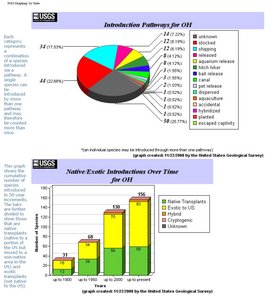
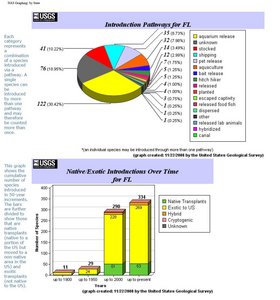
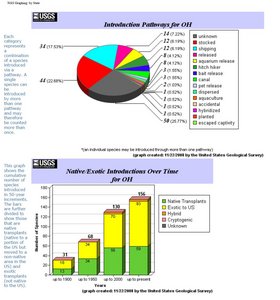
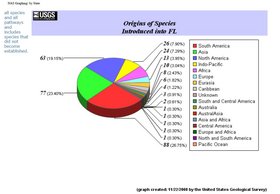
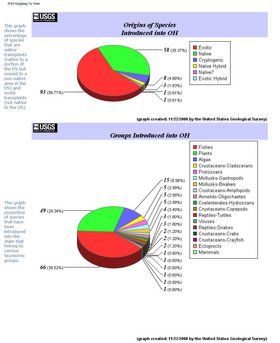
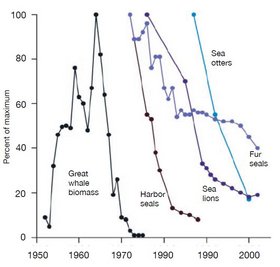
_1786-93%2c_Fig._1(2).jpg)
